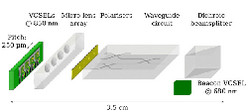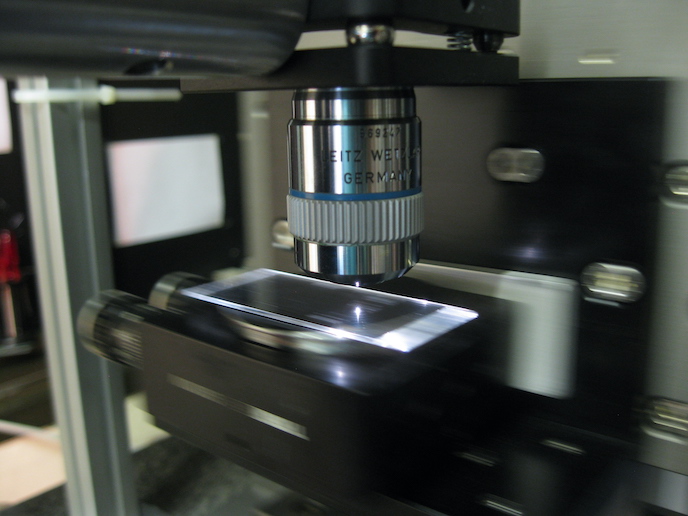Commercial possibilities for quantum plug-in devices
The overall goal of the EU-funded QWAD project was to develop disruptive photonics technologies and bring them from the lab into the real world. This was achieved by taking the concept of optical waveguides and, based on significantly increased performance of laser-written circuits, identifying advanced applications and making them ready for commercialisation. The project team found that laser-written waveguides enable highly integrated 3D structures to produce tailored quantum simulators and photonic quantum computer nodes. These miniature quantum devices have huge potential in the development of innovative chip-based quantum key exchange components, which would strengthen the security of quantum data. What is more, the devices developed through this project can be added on to existing optical communication systems with no need for expensive upgrades. This means that applied quantum research has the potential to benefit European small and medium sized enterprises (SMEs). More secure communication ‘One way that quantum technologies promise to revolutionise our digital world is by providing greater security in communications,’ explains project coordinator Professor Harald Weinfurter from the Ludwig Maximilian University of Munich, Germany. ‘Building on this, what we did was to simplify optic technology components and make them much smaller, in order to integrate them inside a pane that looks something like a glass match. This device can then be plugged into conventional optical communication devices to achieve more secure optical communication.’ While the initial market for innovative quantum optical components developed within QWAD is confined to research institutions for the moment, Weinfurter is confident that the market potential for nonlinear optical systems and secure communication components is only set to grow. Widening research horizons The QWAD project has also broadened possibilities for quantum researchers. The development of fully integrated light-polarisation technology was demonstrated for the first time, paving the way to the realisation of portable, precise and cost effective commercial devices for the manipulation and analysis of light polarisation. ‘A key goal at the start was really to understand how writing waveguides work, and how we could harness them,’ explains Weinfurter. ‘The technology was there, but thanks to the work of our partner Roberto Osellame and his team from CNR-Milano, we now know how to fabricate a multitude of optical components as waveguides. This breakthrough will enable researchers to carry out more quantum computation and simulation experiments, which are indeed currently being conducted.’ Moreover, following completion of the QWAD project at the end of 2015, CNR-Milano is currently developing a method of writing waveguides into crystal, as opposed to glass. ‘While glass consists of a network of material that looks a bit like a sponge, crystal is very well structured and requires a new way to produce the waveguide,’ explains Weinfurter. ‘One possible application for this technology, when it is ready, might be metrology, where quantum states of light can be used to further improve precision, or, as demonstrated, a quantum memory for light.’
Keywords
QWAD, quantum plug-in devices, optical waveguides, light-polarisation technology, FET Future and Emerging Technologies







